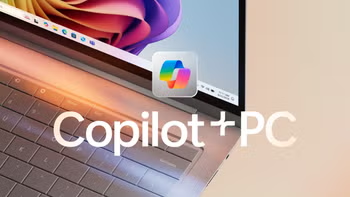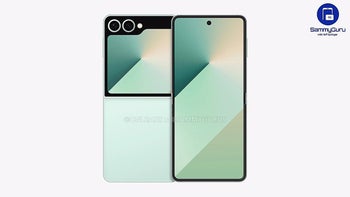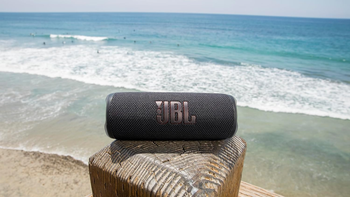Plantronics BackBeat FIT Review
Introduction
Even a dull, tedious exercise routine can be transformed into a pleasurable workout by turning some motivational music on. And you know what, Plantronics has just the thing – the BackBeat FIT stereo Bluetooth headphone set. It is sweat-resistant, durable, and light, which makes it ideal for use while jogging or lifting weights in the gym. But it is also quite expensive, carrying a $130 recommended price tag. Still, is investing in one of these worth it? Let's find out!
In the box:
- Neoprene armband
- microUSB cable
Design and comfort
Clearly, the Plantronics BackBeat FIT is an accessory for the sportier folks among us. It wraps tightly around the wearer's ears, and the earbuds lock themselves in place inside the earlobe with the help of a flexible extension on their rubber tips. As a result, there is a minimum chance of the headset falling by accident, and we had no instances of it coming off even while running. The left and right earbud are connected by a cord, which is insulated by a thick, yet flexible rubbery material with a very durable feel. Like it or not, the wire is designed to hang around the back of the user's neck without being in contact with the skin. Because of that, the headset does not limit or disturb the movement of the wearer's head, but it will probably push against the collar of your sports jacket if you happen to be wearing one. Overall, the Plantronics BackBeat FIT is light and comfortable enough to be worn for hours at a time. It might not get along well with some types of upper clothing, however.
One thing that makes the Plantronics BackBeat FIT stand out is that it features a liquid-repelling nanocoating by P2i. It has been applied in order to prevent any sweat from damaging the headset, but it will also be of use if it happens to get caught in the rain or in case you accidentally spill your Gatorade on the device. This doesn't mean you can take them under shower, though.
We have no complaints about the buttons on the BackBeat FIT. On the left earphone we have a sufficiently large play/pause button, and above it resides a tiny, yet pointy and easy to find volume control key. The same configuration takes place on the right as well – a large, circular key for answering calls, and a smaller, pointy key to power the headset on and off.
As for the neoprene armband included in the set, it gets the job done if you feel like carrying your phone in it during exercise. It comes in a color matching that of the headset – a bright hue of green or blue – and its reflective surface glows at night, potentially alerting any passing drivers of your presence. It would have been nicer, however, if the strap was elastic. Another downside is that since it has been designed with the iPhone in mind, larger phones may not fit in there. The largest one we managed to squeeze inside was a Samsung Galaxy S4. And while we're at it, the case is large enough for the BackBeat FIT or an iP
Functionality
Pairing the BackBeat FIT with your smartphone via Bluetooth for the first time is a straightforward process – the headphones enter a pairing mode automatically as soon as you power on the headset. The process is equally simplistic if you ever have to switch the host device – you basically have to first power off the headset completely, and then hold the power button for about 5 seconds to enter a pairing mode.
As for the type of functionality the BackBeat FIT offers, don't hold your breath – you're getting the typical slew of options, just like with any other Bluetooth headset – you can listen to music and also receive and reject calls. Both these key functions are carried out with the use of a the four convenient buttons (two on each side) that control the music player on your smartphone (through the two buttons on the left), and answer and reject calls (via the large, circular button on the right).
Sounds simple enough, but there's actually a short learning curve until you memorize the different combinations that allow you to actually exert that control. For example, playing/pausing is done by pressing the left circular button, but skipping to the next song takes two taps, and playing the previous track again requires you to long-press until you hear a spoken confirmation. The same applies for volume control – clicking the small, pointy button the left will shoot the volume up, but you'll have to long-press in order to have the headset quiet down. Calls function somewhat similarly – a single tap of the large button to accept a call, and a long-press to reject one. While in calls, you can also mute your microphone by tapping on the left button, which usually controls the music player. In all, it took us a some getting used to before we were able to unleash the full potential of the BackBeat FIT in the gym, but there's nothing non-standard or complex in the way the FIT works.
Lastly, the BackBeat FIT's tiny battery is rated good for up to 6 hours of talk time, 8 hours of music streaming, and 14 days of stand-by. Whenever not in use, the headset goes into hibernation mode, and is apparently able to withhold its charge for up to 180 days.
Call and audio quality
So after exhausting the functionality you can make use of with the FIT, it's safe to say that call and music quality ranks pretty high on the list of requirements we would have towards it.
Let's first talk call quality. We've got to say that we were disappointed, though the in-ear speakers proved noticeably inferior in comparison with the microphone. We were hearing the other side as if a very long-distance fixed line call was taking place, with overall very poor quality. Regardless, it was actually great to see that people's voice timbers were preserved, and were easily identifiable. As for the microphone – it's very, very loud. In fact, contacts on the other end reported being forced to lower the volume, as it was apparently close to deafening. Once the volume goes down, things normalize, though higher-pitched sounds crackle.
You'll be also wanting to listen to some tunes during those early-morning jogs, and the BackBeat FIT has you covered here. We were mostly happy with sound fidelity – music is pleasantly transmitted through the headset, and singers' voices were very clear. As for the bass you get with the FIT, it's a tentative pass, as it's neither deep, nor powerful enough, and is altogether missing when streaming specific music genres
.
Conclusion
At $129, the Plantronics BackBeat FIT is a tough sell, and it doesn't help that the included neoprene armband is intended for use with Apple's iPhone 5s – nudging in a 4.5 to 5-inch Android device is often impossible. But the FIT has its niche with the fitness-oriented crowd, and we actually appreciated the sweat-proof material used, as it doesn't stick to your neck when exercising. That said, we were a tad disappointed by audio reproduction, at least as far as bass is concerned.
In conclusion, if you're simply looking for music reproduction during your work outs, you can make do with something much cheaper, like the Motorola S10-HD (~$45), or the Jaybird Freedom ($64.99). If, however, you're looking for something higher end, then you might as well take a look at the Jaybird Bluebuds X ($169) before making a call.










Things that are NOT allowed: